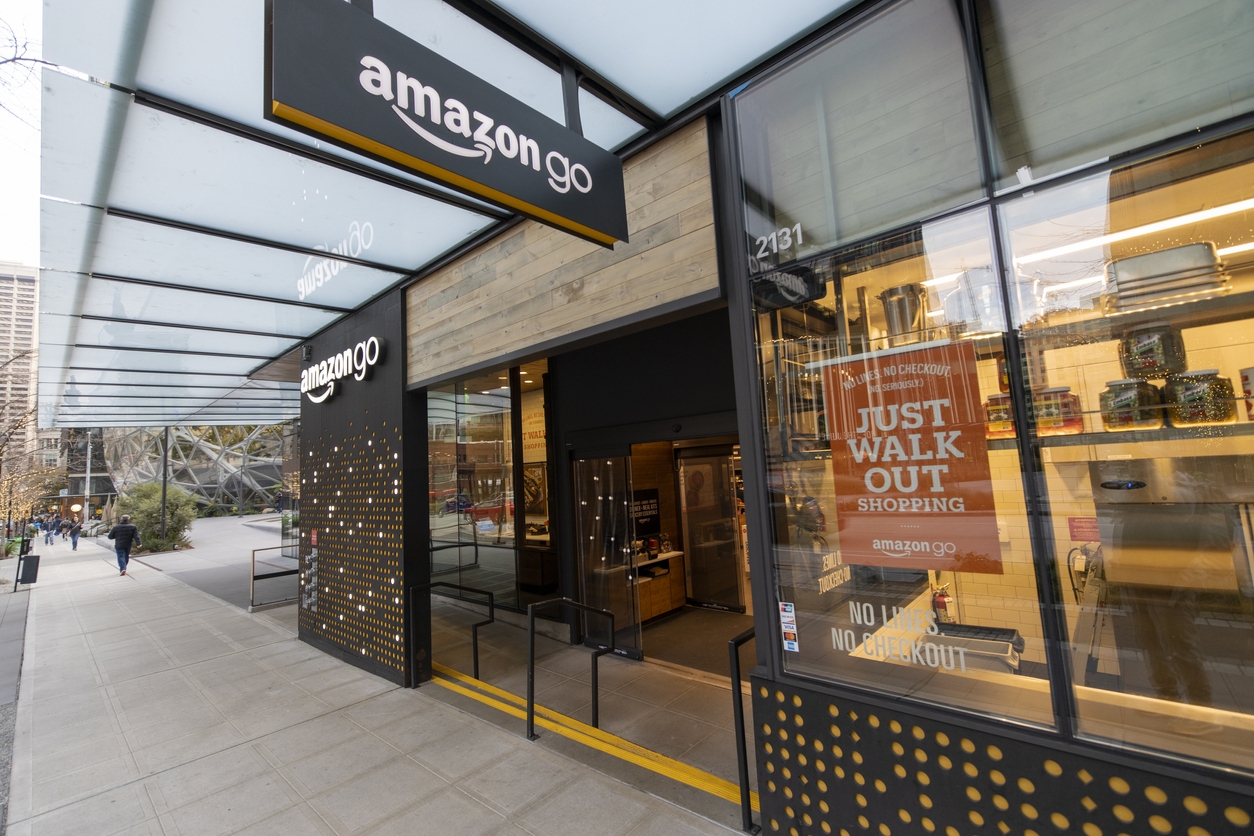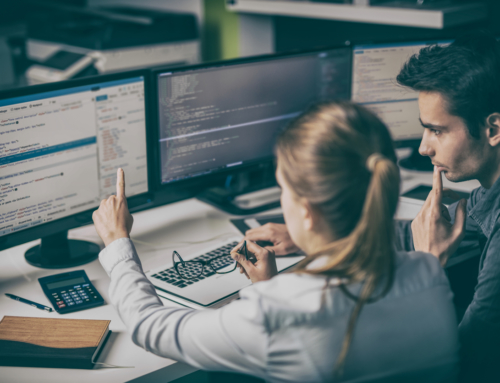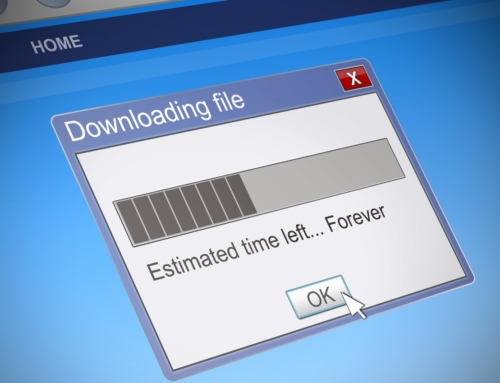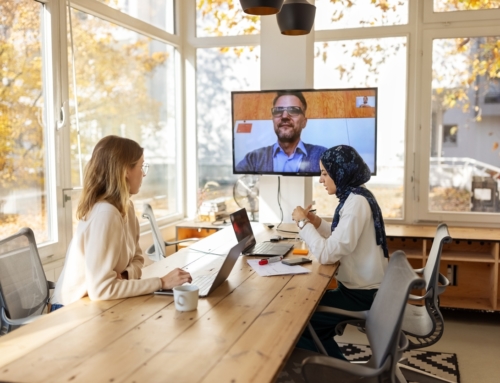Envision the future. Look past the flying cars and household robots to the ease and smooth concierge-like experience we imagine the future to hold. That is what Amazon Go aims for with its “Just walk out” shopping technology. There’s no doubt today that self-serve stores and the technology they represent are the keys to the future we all dream about. But how, exactly, do self-serve stores work?
The technology behind “Just walk out” shopping is a proof-of-concept. The cutting-edge experience of shopping without a cashier or card is created using a combination of technologies you may already be familiar with – but in a creative and even controversial new way.
Let’s explore the tech that lies behind “just walk out” self-serve stores and the future they hold.
The Technology Used to Design a Self-Serve Store Like Amazon Go
Let’s paint a picture of the experience. You walk into an Amazon Go (or China’s BingoBox) store. You open your Amazon Go app and scan the QR code on the Key page. The turnstile unlocks and you can enter the main store. You might grab a Dash Cart with a little display at the handlebars or a simple cloth tote. As you pick out items, they are added to a visible receipt on your phone. If you put an item back, it will even be removed from your receipt.
When you’ve shopped your fill, you simply walk out of the store, and your account is charged. No scanner, kiosk, or cashier. You just leave and receive a digital bill. Now here’s how it works:
How Amazon Go Knows Who You Are
- Smart Phone Apps and QR Codes
- Facial Recognition and People-Tracking Cameras
First, how do self-serve stores know who you are and who to charge for the goods? That relies on your smart phone, but there are other technologies to back this up. Mainly, facial recognition. You open your Amazon app, log in, and scan a QR code at the store’s entrance before you are let in. The store’s cameras may take an image of your face then, and use facial recognition and figure-tracking software to follow your movements through the store.
It should also be noted that some department stores are already using the DID (device ID) of customer smartphones. This may also play a role in future self-service shopping experiences.
How Amazon Go Knows What You Took
- Self-Scanning
- Weight Sensing Shelves & Carts
- Shelf Cameras that Count Items
- Tracking Your Movements
- RFID Tags
How does a self-serve store know what you take? This is actually done in a wide variety of ways and could be done in even more. No one knows for sure how Amazon Go stores are working, but according to a patent filed by Amazon, they are likely using both weight-sensing shelves and cameras that can track how many items are on each shelf.
Paired with people and movement tracking, it’s easy to combine a person who entered with a parfait they took. There are also devices called “Dash Carts“, which are very small and have a built-in scale to weigh what you put in and what you take out.
Other methods include self-scanning (remember the handheld scanners of the early 00s?) and checkout kiosks. Some stores may even use RFID tags to track the precise location of valuable items using short-range radio waves. In fact, resorts are making extensive use of RFID technology and are pushing that envelope of self-service forward faster than these Amazon lunch stops.
How It Checks Out Your Order
- Self-Service Kiosks
- Linked Digital Payment Account
Lastly, how does a self-service store charge you without getting out your card? While anyone can use a chip-reader to check out, Amazon Go and BingoBox both use the “Just walk out” model through linked digital payment accounts and door trackers. When someone who scanned it leaves the shop, everything they rang up will be charged to their account. Customers can also check their receipts on the mobile app before leaving to make sure the list is correct.
The Full View of Self-Service Technology on the Cutting Edge at Amazon Go
Of course, grocery and deli shops like Amazon Go aren’t the only embodiment of cutting-edge self-service technology. You will find innovative self-service in retail, fast food and even sit-down dining, airports and transit stations, hotels and resorts, theme parks, museums, and back around to Amazon with automated shipping lockers.
Retail Kiosks and Mobile Orders
Large grocery stores ranging from Albertsons to Walmart include self-service checkout stations where customers scan and weigh their items on the way out under the watchful eye of security cameras, while many fast food chains have apps that allow pre-ordering, paying digitally, and sometimes even picking up orders. Sit-down restaurants during the pandemic were even updated to QR-code accessible digital menus and mobile at-table ordering.
Airport and Hotel Check-In
Airports and hotels embraced self-check-in first with kiosks and then with mobile phone apps. This phone-based check-in then evolved to using your phone for your ID, wave-pay RFID digital payments, and now RFID hotel room keys emitted from your phone app. Never lose your key card again.
Park and Resort RFID Tracking
Theme parks and resorts use RFID bracelets like the Disney MagicBand to track guests to unlock doors, charge drinks to the room, personalize guest experiences, and to keep guests out of restricted areas.
Automated Lockers
Finally, automated lockers as used by brands like Amazon and Home Depot make it possible to open your own one-time mailbox with a signal or QR code from your phone or open a locker to mail something out.
Taking Your Place in the Future of Self-Service Technology
Are you as curious and excited about the evolution of self-service technology as we are? Just by reading to the end of this article, you are already aligned with the next wave of retail, hospitality, and quality-of-life technology upgrades. With the right classes and a passion for innovative design, you could be among the teams of engineers to design the next big step in automated convenience that could benefit millions.
To unlock your potential and turn your passion for technology into applicable design and engineering skills, WOZ U is here to help you get started. With many different options, you can start your journey to a career in tech now!





